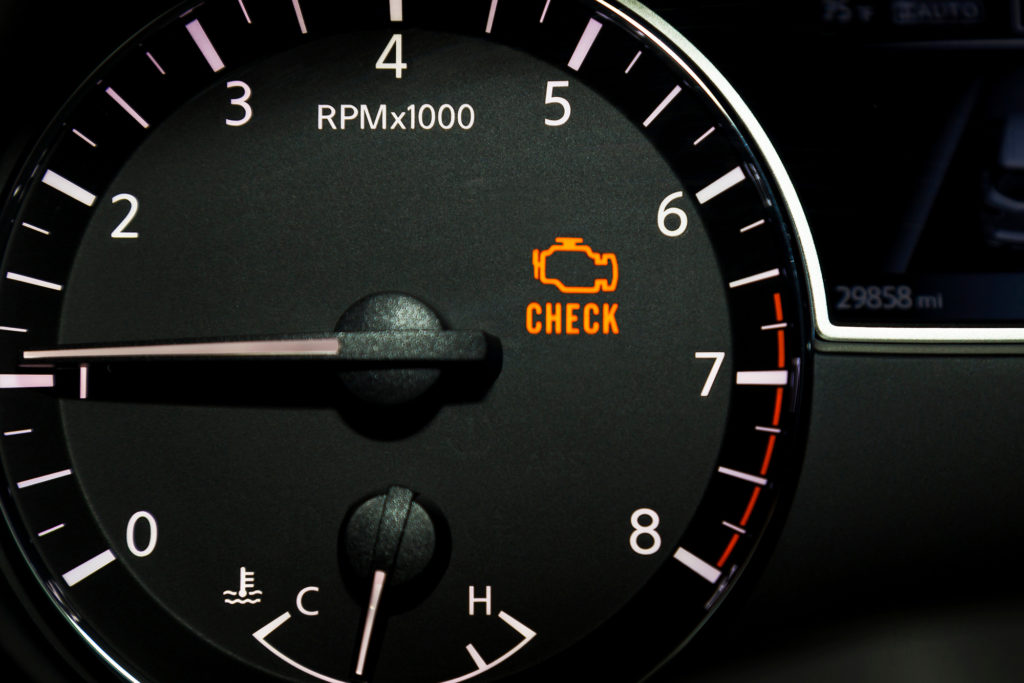The brake pedal and accelerator pedal are both monitored by the powertrain control module (PCM). The computer monitors the voltage output of the accelerator pedal through the accelerator pedal position (APP) sensor to ensure that all systems are working properly. If the PCM notices implausible readings from both the brake pedal and accelerator pedal, a P2299 code will be set by on-board diagnostics.
What Does the P2299 Code Mean?

Diagnostic trouble code (DTC) stands for “Brake Pedal Position/Accelerator Pedal Position Incompatible.”
Note: The definition of code P2299 might be different depending on the vehicle manufacturer. Consult the appropriate repair manual or repair database for the exact code definition.
For more information about the P2299 code, read our notes about the brake pedal and accelerator pedal position.
P2299 on Some Dodge Vehicles
On a 4.7L 2008 Dodge Durango Limited V8, this code is triggered when the PCM recognizes a brake application following the APP sensor showing a temporary or fixed pedal opening. This causes the PCM to reduce engine output, which is usually below the driver’s demand.
A P2299 code can appear on a 2008 Durango Limited because of the following:
- Driver is simultaneously stepping on the accelerator and brake pedal
Meanwhile, here is what P2299 code means on a 2017 Dodge Challenger:
When this code is set, the Powertrain Control Module (PCM) has recognized a brake application while the APP Sensor is indicating a fixed throttle opening. This can be caused either by an intermittent or constant condition.
Possible causes:
- Customer Pressing Accelerator Pedal And Brake Pedal, And Holding Them Down Simultaneously
- Brake Pedal Out Of Calibration
- Brake Pedal Position Sensor
- Accelerator Pedal Position Sensor

What are the Common Causes of the P2299 Code?
- Accelerator pedal position sensor failure
- Accelerator and brake pedal are depressed at the same time
- Wiring issues
Notes by Richard McCuistian, ASE-certified Master Automobile Technician:
1. The most likely cause of DTC P2299 is caused by the customer driving with one foot on the accelerator pedal and the other resting on the brake pedal or a brake pedal position sensor stuck in the pressed state. Ask the driver of the vehicle if these conditions apply to their driving habits before continuing.
2. If a pedal assembly becomes mechanically stuck the voltage output will stay fixed. If this is also followed by a long application of the brakes, this code will set.
When this code sets, the pedal position in the PCM software will ramp to idle.
If the pedal voltage changes or the brake pedal is released, the pedal position in the PCM software will ramp up to the pedal position and the ETC light will go out.
What are the Common Symptoms of the P2299 Code?

- Illuminated check engine light
- Decreased engine performance
How to Diagnose the P2299 Code
If you wish to fix code P2299, you must repair any ABS system codes first.
Keep in mind, however, that the steps for diagnosis and repair for P2299 can vary, depending on vehicle specifications. Suppose you’re not familiar with the diagnostic process. In that case, it’s always a good idea to have a professional mechanic do the job for you to ensure that all steps are followed correctly. Otherwise, you can go ahead and do the task on your own.
How to Fix the P2299 Code
Attempting to fix a P2299 code can be frustrating and confusing without the right tools and advanced technical knowledge. Under these circumstances, it’s best to bring your vehicle to the nearest repair shop and have a trained professional perform the necessary repairs to ensure that protocols are followed correctly.
But if you’re someone who’s had their fair share of dealing with trouble codes before, then you already know how crucial vehicle-specific repair information can be to resolve the trouble code properly. So before you begin, make sure to consult guides like those from Chilton or an ALLDATA subscription to get vehicle-specific repair steps.
Any information provided on this Website is for informational purposes only and is not intended to replace consultation with a professional mechanic. The accuracy and timeliness of the information may change from the time of publication.















